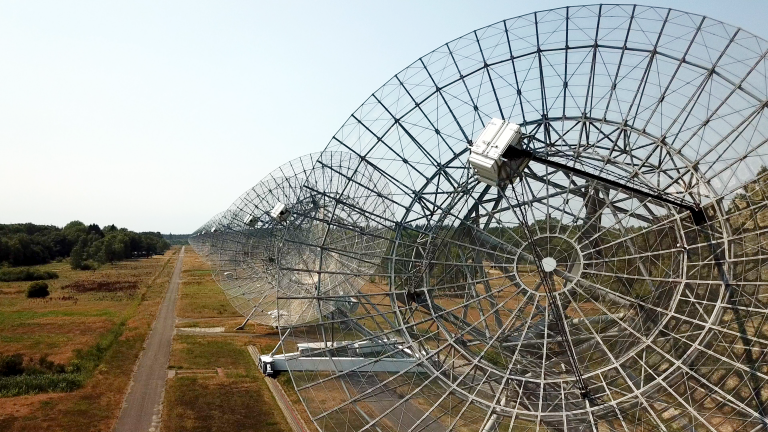SKA pathfinder Apertif officially opened in the Netherlands

The Apertif high-speed, wide-field radio camera – also known as a Phased Array Feed (PAF) – is an innovative new type of receiver developed by the Netherlands Institute for Radio Astronomy (ASTRON). The upgrade means that 12 of the 14 Westerbork dishes can now map a part of the sky that is 37 times larger than before using a technique called beamforming.
Apertif is a pathfinder for the SKA, and ASTRON, which is leading the Dutch participation in the SKA, is part of the project’s Phased Array Feed advanced instrumentation programme.
The upgrade was formally unveiled by Mr. Cees Bijl, deputy of the Drenthe province where the telescope is located, at an event which also marked the facility’s 50-year anniversary.
SKA Director-General Prof. Phil Diamond attended the ceremony and was impressed by the capability of the Apertif system, saying: “PAF technology has a great potential for eventually enhancing the SKA’s capability and several of our partners are involved in developing this technology. Apertif will bring us invaluable insights and we’ll keep a close eye on further developments and results emerging from the instrument.”
Apertif will map a large part of the northern sky to make radio images of the neutral hydrogen gas in the Universe, providing a unique and new view of the properties and distribution of gas in galaxies. It will also look at a smaller part of the sky in much more detail, giving us a sharper picture of very faint, nearby galaxies, as well as galaxies in the very distant Universe.
It will also search for the most powerful explosions in the Universe, called Fast Radio Bursts (FRBs), the origin and nature of which are still largely a mystery.
“To develop a complex instrument such as Apertif, many people from multiple disciplines have to collaborate closely,” says ASTRON project leader Agnes Mika. “That’s why engineers from different departments have been working together in one room for more than a year. This improved the communication and problem-solving significantly. I am very proud of the whole team, and happy to see Apertif become operational.”
Read the full ASTRON press release here.
Learn more about Apertif on the ASTRON website.




